- Home
- >
- Preservation Archaeology Blog
- >
- Hands-On Archaeology: How to (Ethically) Harvest L...
(January 22, 2025)—What is lac, and why do we care how it is harvested?
If you haven’t yet read Marilen Pool’s recent post on lac, go do that now. Marilen explains what it is and how people have used it through time. Some years ago, Marilen attended one of my knife-hafting classes and introduced me to lac. I spent a few years learning how to find it and gather enough to introduce it as an adhesive in my classes.
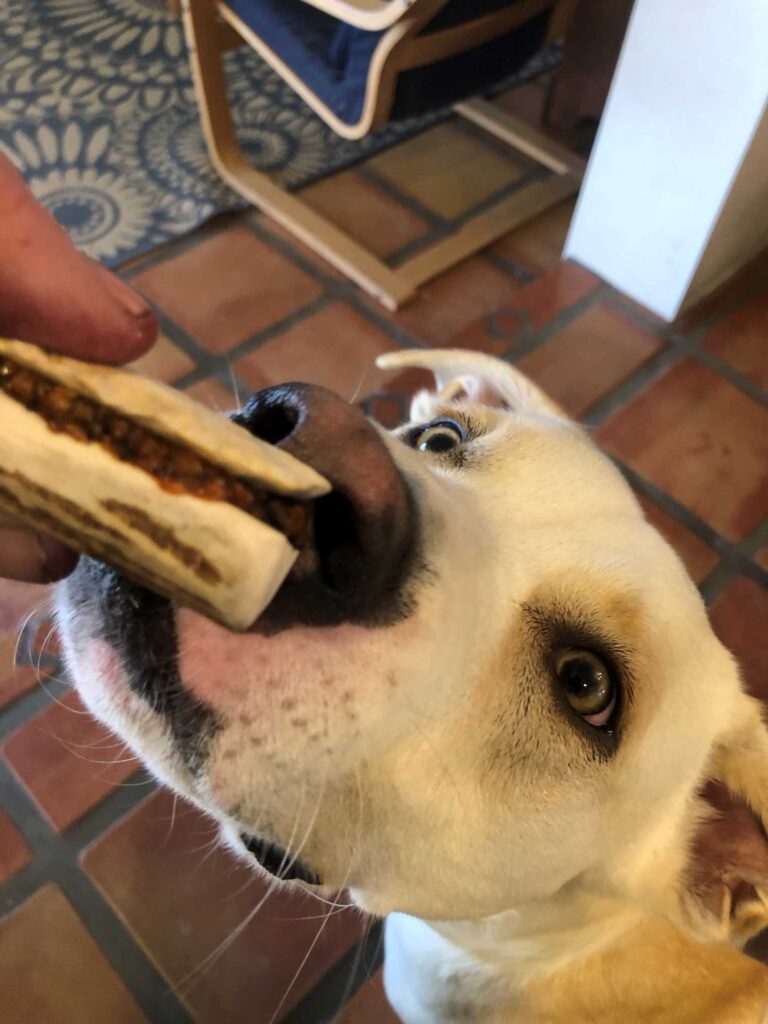
The first thing I realized is that lac is not easy to find, especially on the creosote plant. I walked many miles before I trained my eyes to spot it. As I got better at finding it, I realized what a precious commodity it is, and how time-intensive it is to gather.
Because it is relatively rare on the landscape, I wanted to share with potential fellow gatherers some guidelines for ethical harvesting. It is important to not over-harvest.
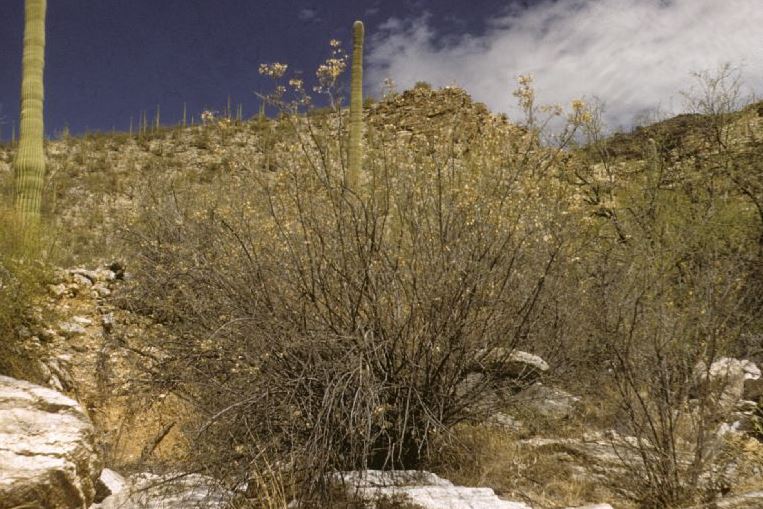
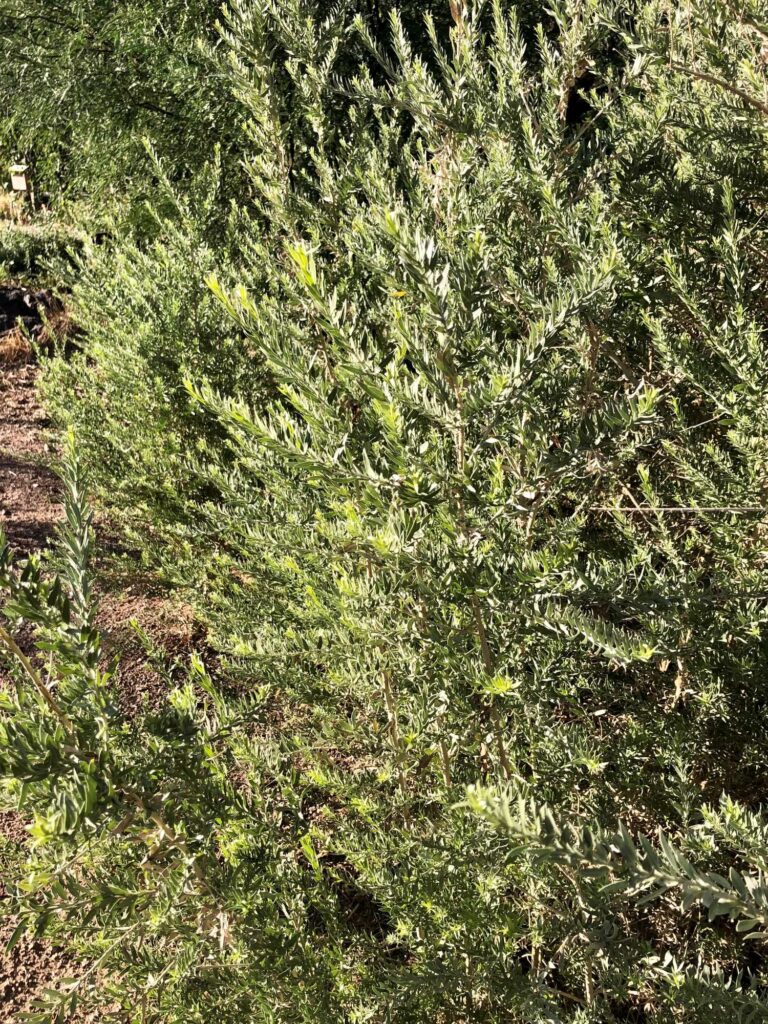
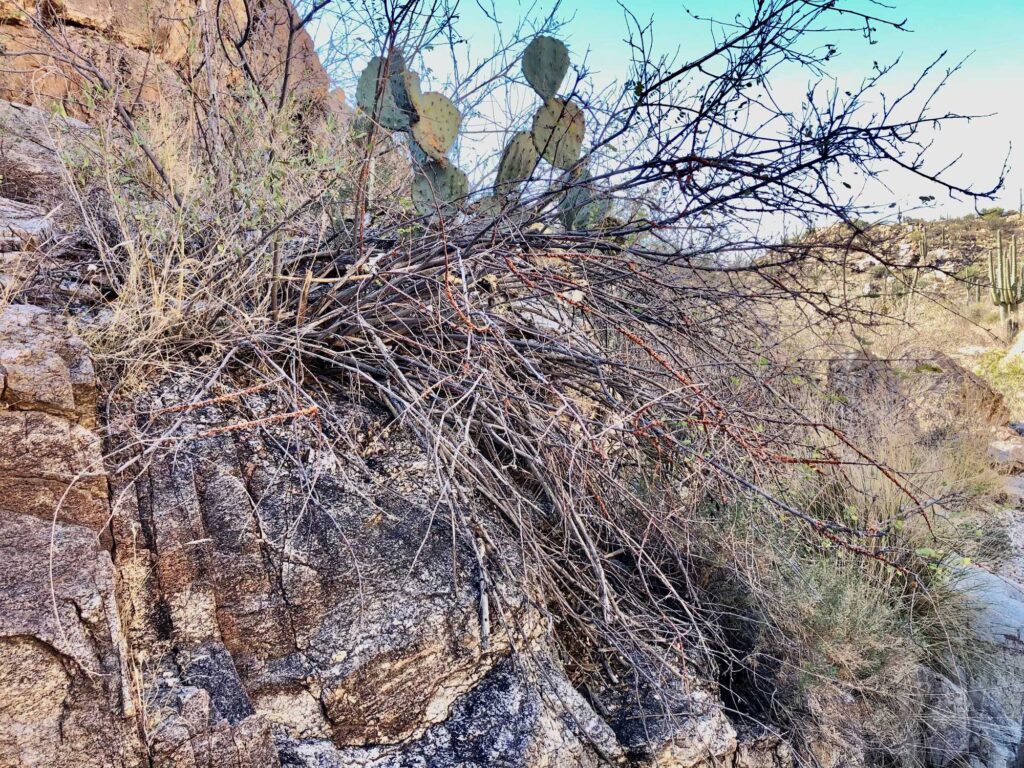
As a harvester, you do not want to damage the living portion of a colony. I try to find dead branches on living plants. This is best done in the summer, when it is easier to distinguish leafy living branches from dead ones (in the winter, the plants can shed most of their leaves and appear dead).
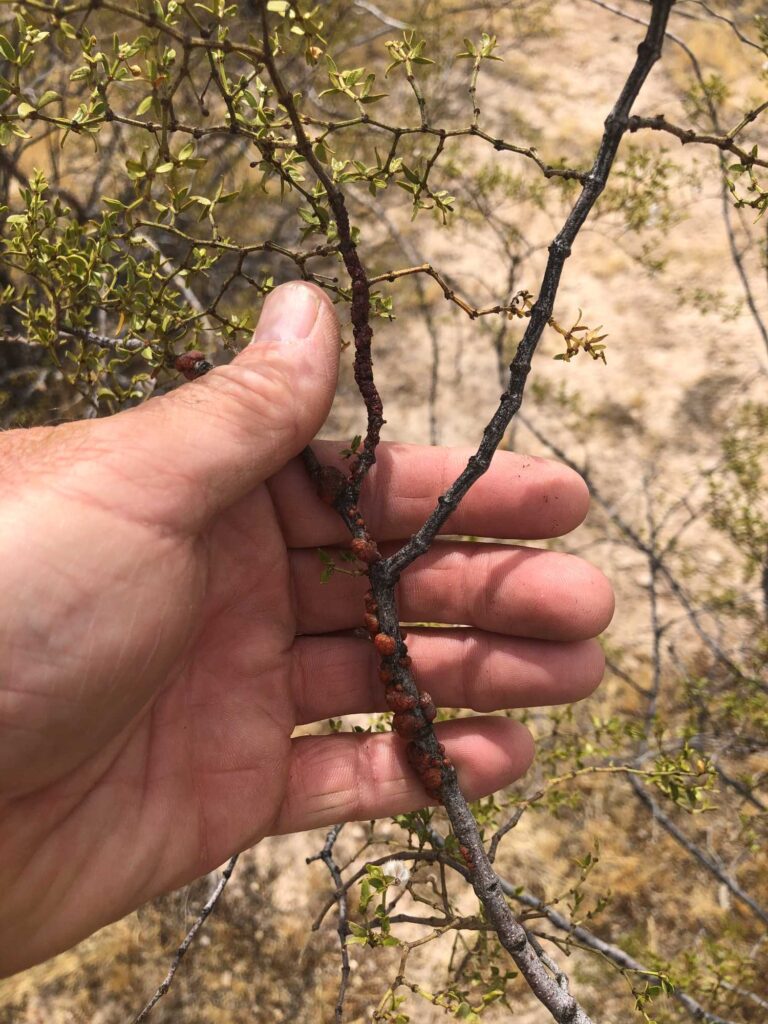
In the image above—you probably won’t be able to make them out—tiny ants are farming the lac. In the summer, that’s how you know the lac is active and alive. You shouldn’t harvest that lac. Lac insects secrete some sugar for the ants, who in turn help protect the colony.
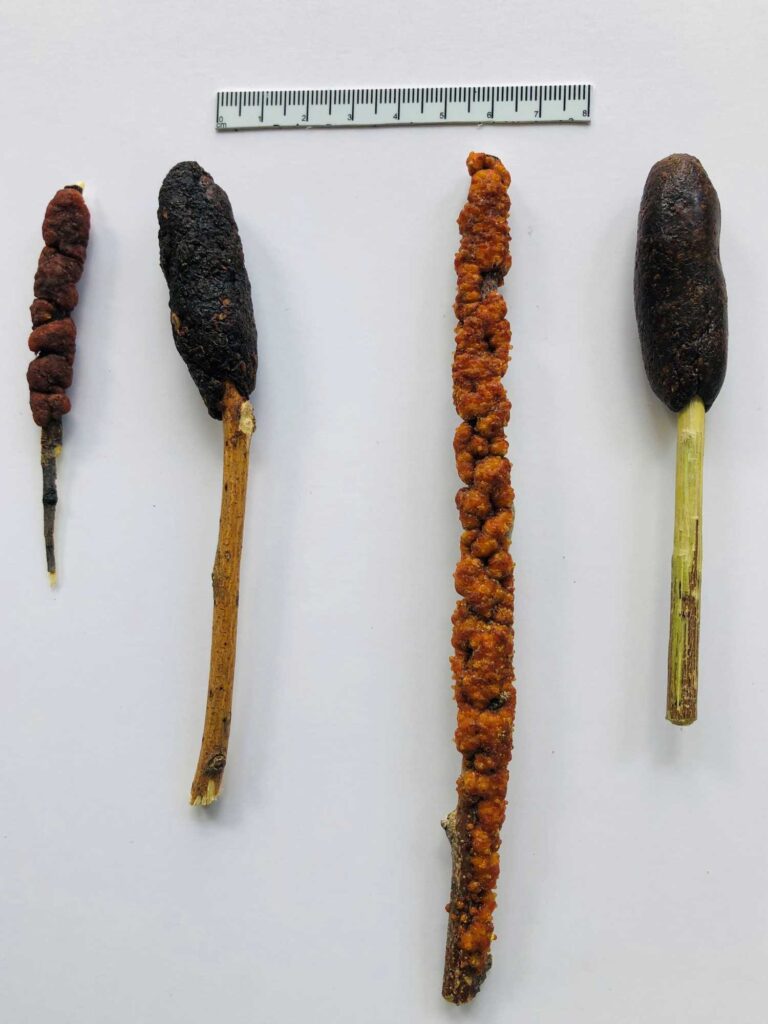
The creosote lac above (left) as it naturally appears on the plant is depicted alongside the tool I created for carrying lac by melting a bunch of lac on the end of a stick. A hunter could bring something like this tool along in order to haft points while out on the landscape. At the right are examples with Rosary babybonnet lac. It is much easier to gather and is more abundant when you find it.
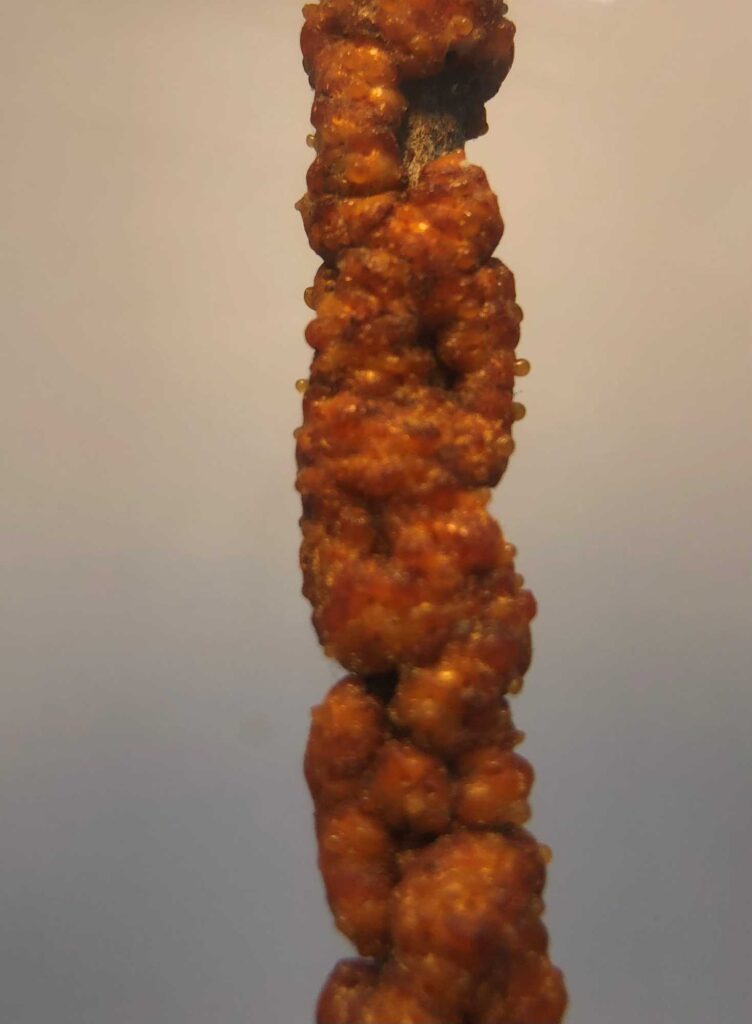
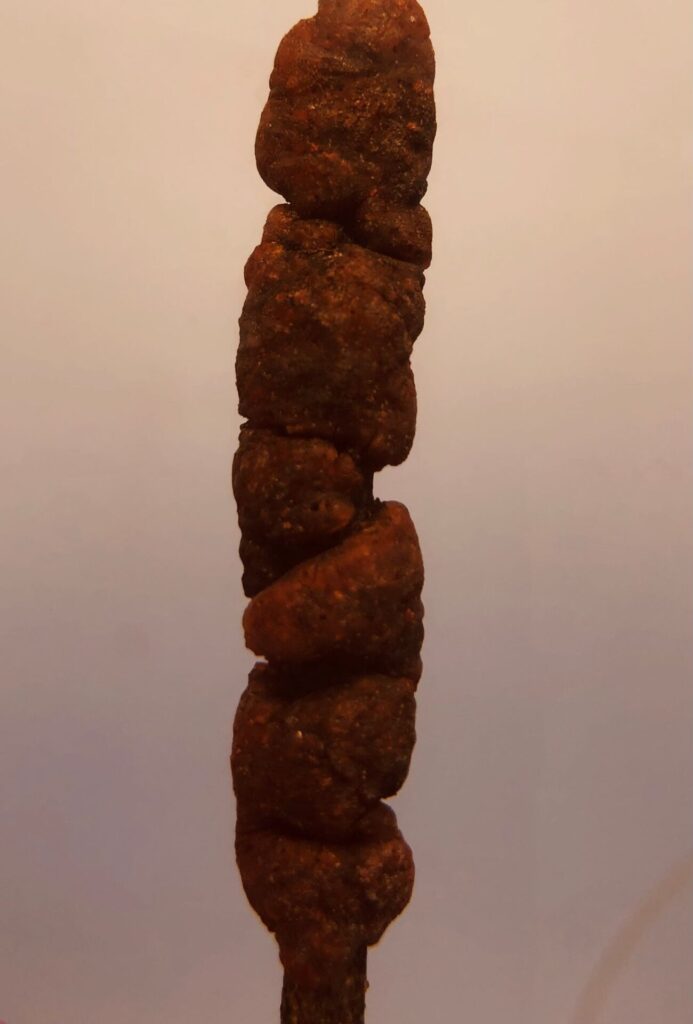
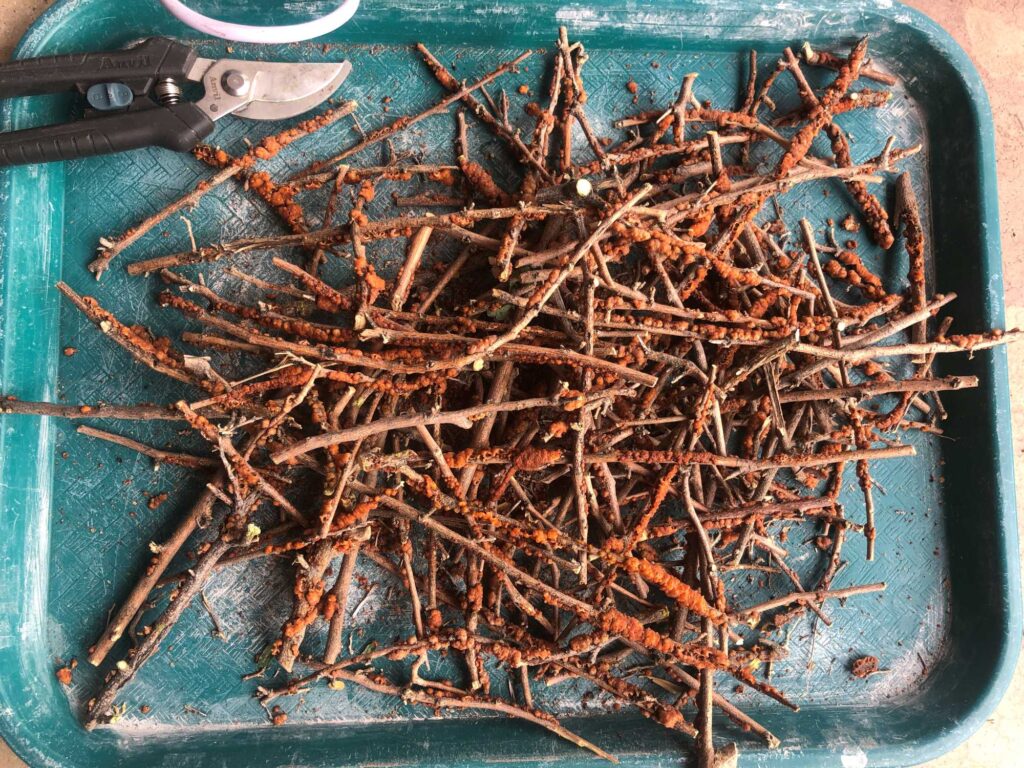
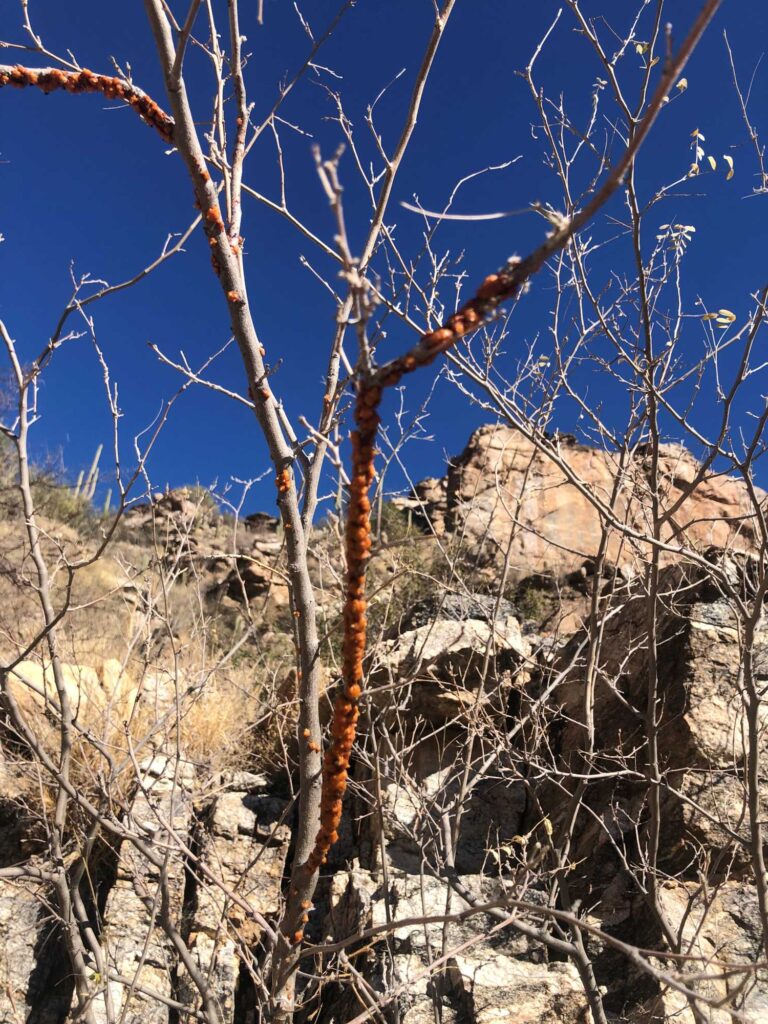
Dead lac is duller in color and easier to break off the branch. Active lac, at least on the Rosary babybonnet plant, is glossier and brighter. Only cut dead branches in order to ensure that the lac colony is no longer active and alive. This will ensure the continued life of lac colonies.
I’ll have more posts on lac coming soon!
One thought on “Hands-On Archaeology: How to (Ethically) Harvest Lac”
Comments are closed.
Facinating! Thanks for your patience Allen to figure out how to sustainably harvest the lac.